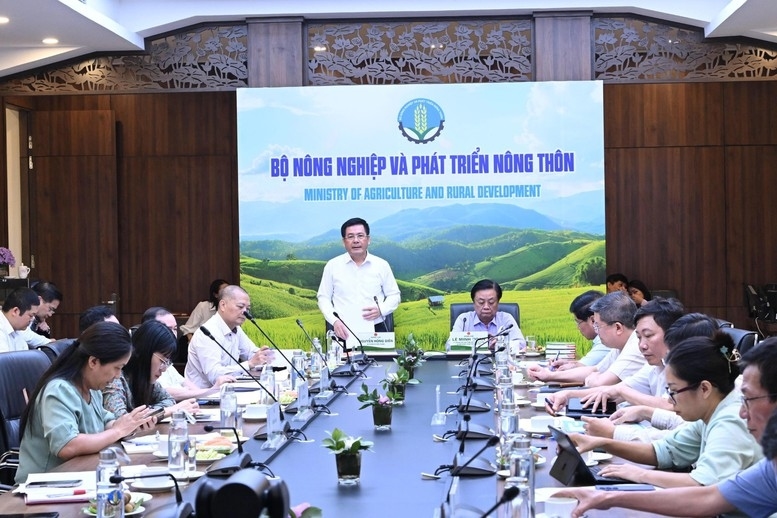 |
| The Ministry of Agriculture and Rural Development (MARD) and the Ministry of Industry and Trade (MoIT) have proposed establishing the National Rice Council to address rice-related issues at a working session in Hanoi on August 6. (Photo: MARD). |
The rice industry plays an important role in the agriculture of Vietnam as well as many countries in the world, contributing to ensuring food security and improving farmers’ livelihood.
Statistics show that Vietnam exported a 16-year record high of 8.1 million tonnes of rice in 2023, representing an increase of 36.6%. The first seven months of this year saw businesses ship 5.18 million tonnes abroad, marking a year-on-year rise of 5.8%.
However, agricultural producers are among the low-income and most vulnerable groups, especially in the face of climate change, new epidemics and market fluctuations. Meanwhile, international market developments are posing challenges to the sustainable development and competitiveness of Vietnam’s rice industry.
MARD Minister Le Minh Hoan said along with overcoming the limitations of the rice industry, the National Rice Council will quickly handle problems arising in commercial activities of the rice industry, including the rice export policies of leading rice exporters like Thailand and India, and the problem of fake rice brands.
As soon as the council is established, it will meet once a year, or at any time if there is an unexpected event to occur that need to be addressed. The council will support associations to operate more effectively and resolve internal problems more quickly.
Meanwhile, MoIT Nguyen Hong Dien pointed out that if the council is established, it will be tasked with advising the Government to have strong and feasible policies aimed at promoting Vietnamese rice value and brand in the world market.
The MoIT said it has drafted a report on the establishment of the National Rice Council, and it will ask relevant ministries and agencies for opinions before submitting it to the Prime Minister.
Hung Yen farmers earn big from specialty longan
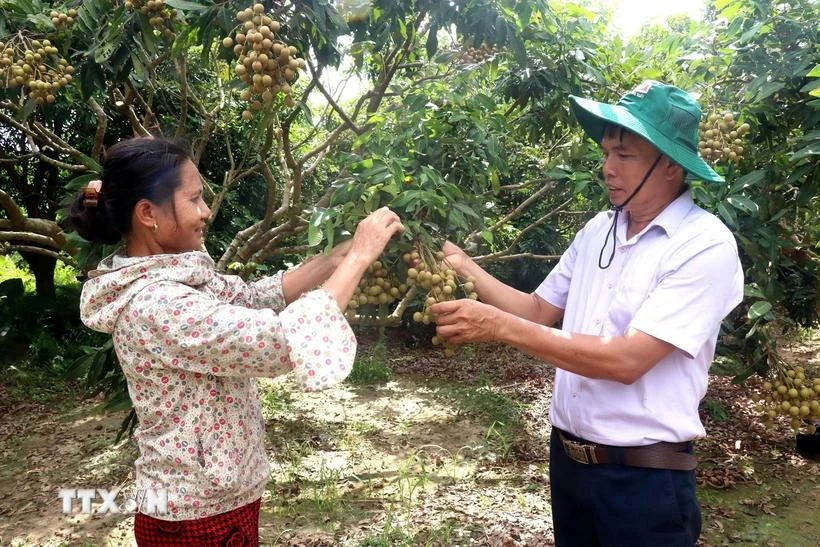 |
| Hung Yen longan is famous for its distinctive fresh, delectable, and sweet flavour. (Photo: VNA) |
Consumers are snapping up the specialty longan grown in the northern province of Hung Yen due to its distinctive fresh, delectable, and sweet flavor, according to Vietnam News Agency.
According to the provincial Department of Agriculture and Rural Development, Hung Yen is now home to some 5,000 hectares of longan, around 1,000 hectares of which are under specialty varieties, mainly in Hung Yen city and the districts of An Thi, Kim Dong, Tien Lu, and Khoai Chau.
Local farmers are rushed off their feet for the harvest season.
Trinh Van Huu, a farmer in Hong Nam commune, Hung Yen city, said he expects to harvest 6 tonnes of specialty longan this year, with each kilogramme sold at 70,000 - 80,000 VND (2.78 - 3.18 USD).
Traders from cities, supermarkets and big farm produce stores have come to buy the staple although it fetches at a high price.
Tran Thi Bac, owner of the Ne Chau longan cooperative in Hong Nam commune, Hung Yen city, said she reaped a profit of some 80 million VND from selling 1 tonne of another specialty longan within one week. This variety is priced high, 100,000 - 120,000 VND per kg.
Deputy Director of the provincial Department of Agriculture and Rural Development Nguyen Van Trang said Hung Yen, boasting some 50 longan genetic resources, approved a project on preserving and developing specialty longan and lychee planting areas for the 2020 - 2025 period with a vision to 2030.
Accordingly, the province will build a database for tracing its longan and lychee genetic resources by 2025, establish a zone for preserving ancient trees and high-quality ones, and set up a garden for protecting the resources. Meanwhile, its localities will be urged to shift from low-yield longan orchards to high-value ones, and expand the cultivation of specialty varieties.
Vietnamese enterprises remain optimistic about operations abroad
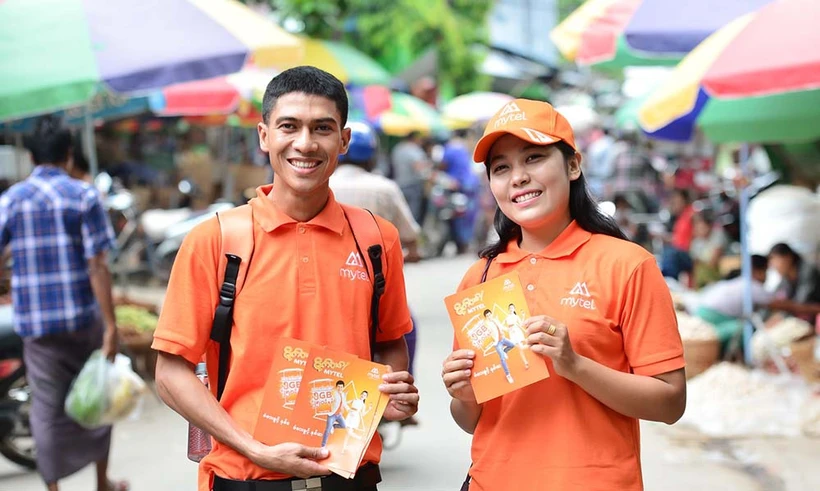 |
| Despite being the youngest network operator in Myanmar, Mytel of Viettel has already established its position. (Photo: baodautu.vn) |
Vietnamese leading investors like Vingroup, TH Group, FPT, and Vinamilk have affirmed their intention to continue expanding their investments abroad in the coming time, given their effective business activities in the host countries, according to Vietnam News Agency.
In mid-May, TH Group started the construction of a dairy cow breeding and milk processing project in Russia’s Far East with a total investment of 5.2 trillion VND (206.9 million USD), as an effort to realise its plan to pour 2.7 billion USD into this market.
Recently, in its financial report in the second quarter of 2024, Viettel Global announced its impressive business performance, with sales and service revenue reaching nearly 8.7 trillion VND, up 27% year-on-year, making it the quarter with the highest-ever takings of the company which is in charge of overseas investment of Vietnam’s largest telecommunications group.
As all the nine subsidiary companies of Viettel Group reported high growth rates in this quarter, Viettel said that it is seeking investment and business opportunities in other markets.
Similarly, the Vietnam Dairy Products Joint Stock Company (Vinamilk) also recorded the highest consolidated revenue in its history, with 16.66 trillion VND. This result was attributed to increases in both domestic and overseas business activities.
Its companies in Cambodia and the US - Angkormilk and Dridtwood – reported a combined net revenue of 1.38 trillion VND in Q2, up 21.8% year-on-year, and higher than the 9.6% increase rate of Q1.
However, it is noteworthy that there have been decreases in Vietnam’s overseas investment in recent years, due to common difficulties of the global and Vietnamese economies.
Data from the General Statistics Office (GSO) under the Ministry of Planning and Investment (MPI) showed that Vietnam’s overseas investment, including both newly-registered and adjusted capital, hit 420.9 million USD in 2023, down 21.2% from 2022. The figure was only 150.7 million USD in the first seven months of this year, equal to 47% of that in the same period last year.
Deputy Head of the MPI’s Foreign Investment Agency Vu Van Chung said that the slowdown is just temporary, and the outlook for Vietnam’s overseas investment will be brighter in the coming time.
According to the Business Outlook Study 2024 (SMEs & Large Enterprises) conducted by Singapore-based United Overseas Bank (UOB), which surveyed over 4,000 companies across industries and seven markets, 90% of the enterprises are increasingly exploring opportunities beyond the domestic borders, with those in industry, oil and gas as well as manufacturing and engineering particularly interested in venturing abroad.
Three LPG storage tanks operational at PV GAS Vung Tau Terminal
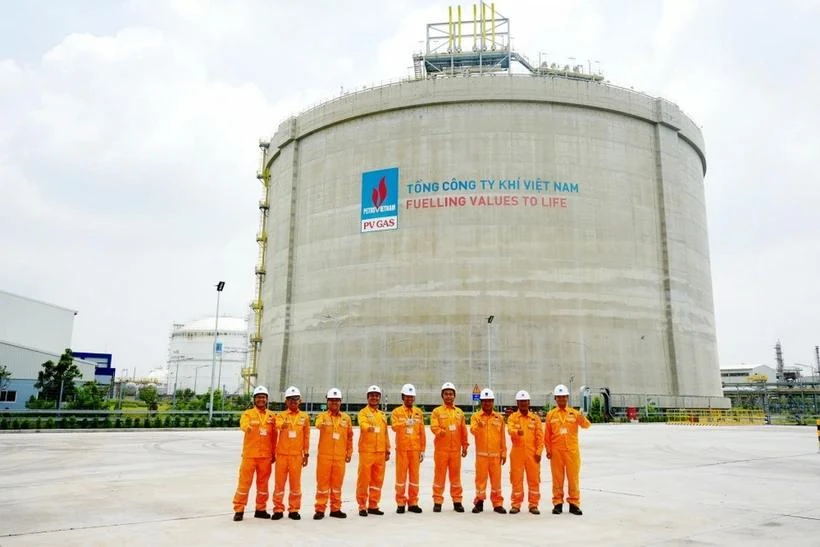 |
| A LPG storage tank at PV GAS Vung Tau Terminal (Photo: VNA) |
The Petrovietnam Gas Joint Stock Corporation (PV GAS) has completed the EPC (Engineering, Procurement, and Construction) work on three LPG storage tanks and put them into operation at PV GAS Vung Tau Terminal in the southern province of Ba Ria-Vung Tau, according to Vietnam News Agency.
The project was invested by PV GAS and managed by the PV GAS Project Management Company (PV GAS PMC), a subsidiary of the corporation, with the Vietnam Petroleum Technical Services Corporation (PTSC) serving as its EPC contractor.
In July, the project completed installation, pre-commissioning and commissioning. It was handed over to PV GAS Vung Tau, a subsidiary of PV GAS, for operation management from July 29.
PV GAS Vung Tau Terminal is a crucial link in the continuous operation of the Bach Ho and Nam Con Son gas systems, with a storage capacity equivalent to 50% of the country's total for LPG. This facility plays an essential role in ensuring national energy security and stabilising the domestic LPG market.
Located in the Cai Mep Industrial Zone, Phu My township, the terminal has been operational since 2000. It is the largest LPG and condensate storage facility in Vietnam, tasked with storing, importing and exporting LPG and condensate products from the Dinh Co Gas Processing Plant, Nam Con Son Gas Plant and imported LPG for ships and tankers, supplying various consumers.
PV GAS invested in the LPG Storage Tank Project at PV GAS Vung Tau Terminal to increase storage capacity, improve operational efficiency, ensure operational flexibility, meet production and business requirements, and enhance competitiveness in the increasingly fierce LPG business environment with many domestic and international competitors.
The project comprises three LPG storage tanks, each with a capacity of 2,000 tonnes, along with technology and auxiliary systems to meet PV GAS's requirements for importing, storing and exporting LPG products. The facility uses spherical tank technology, currently the most optimal for storing and handling LPG.
RoK increases tuna imports from Vietnamese market
Vietnamese tuna exports to the Republic of Korea (RoK) during the first half of the year reached US$14 million, representing a 2.4–fold rise from the same period last year, VOV News quoted figures of the Vietnam Association of Seafood Exporters and Producers (VASEP).
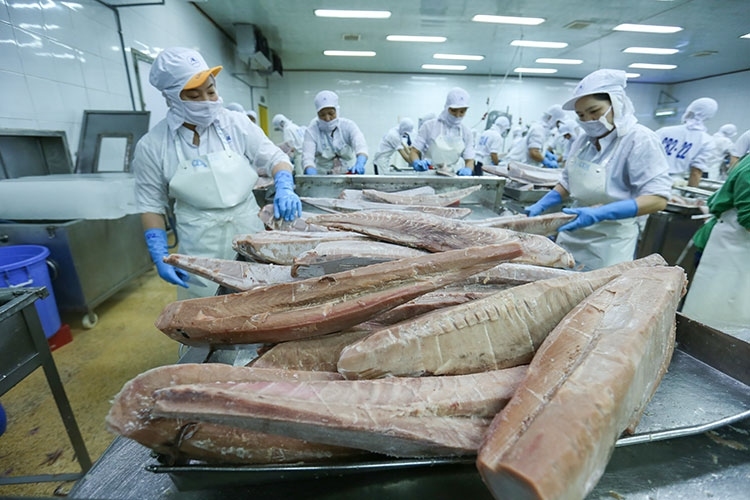 |
| Photo for illustration. (Source: VOV) |
Most notably, tuna exports in June witnessed a six-fold increase to nearly US$6 million compared to last year’s corresponding period.
Insiders pointed out that the growth can largely be attributed to Vietnamese products’ competitive prices and firms’ efforts in grasping the seafood consumption trend in the RoK.
Meanwhile, the Vietnam-Korea Free Trade Agreement (VKFTA), which came into force in December 2015, has provided a solid foundation for stepping up economic, trading, and investment co-operation between the two sides.
In addition, both countries are members of the Regional Comprehensive Economic Partnership (RCEP), while the RoK is also considering joining the Comprehensive and Progressive Agreement for Trans-Pacific Partnership (CPTPP).
Currently, the RoK mainly imports processed and canned tuna products from Vietnam, accounting for 99% of total Vietnamese export turnover to its market. Among these items, frozen steamed skipjack tuna loin remains the most popular product.
According to experts, there is a positive outlook ahead for tuna exports to the RoK thanks to geographical proximity, stable consumption demand, and the fact that this is a large market of more than 51 million consumers.
However, local businesses are currently facing challenges due to an overall decline occurring in the domestic supply source of raw skipjack tuna and high freight rates.
The VASEP’s statistics indicate that the country’s seafood export turnover in the first half of the year edged up by 6% year on year to US$4.4 billion, with key products such as shrimp, pangasius, and tuna all showing signs of a strong recovery.
Currently, tuna exports throughout the reviewed period reached US$472 million, representing a rise of 23% year on year - the most impressive growth rate among main seafood exports./.